How Finmap Helps Local Businesses Organize Their Finances: The Case of Dasha Katsurina Studio + Showroom
If you’re the owner of a local business, you’re involved in daily operations: managing sales, overseeing purchases, communicating with suppliers — all while trying to keep your finances under control.
But even when everything seems to be running smoothly — clients are coming, revenue is steady, the team is motivated — there still might not be enough money.
The reason isn’t always a drop in sales or external factors. Often, the issue lies deeper — in invisible financial processes that gradually reduce profitability and create a sense of instability.
Let’s look at three main financial challenges local businesses face — and see how Finmap helps bring order to cash flow, restore predictability, and bring back peace of mind.
.webp)
Problem №1. Cash Flow Out of Control
In local businesses, everything starts with cash flow. This indicator determines whether the business has enough resources for stable operation and growth.
The main problem for most local companies is the lack of systematic control over cash flow. An owner might see decent revenue but still fail to understand:
- when exactly money appears in the accounts;
- how much of it is already reserved for mandatory expenses;
- and what amount remains freely available.
The lack of this understanding creates financial tension:
- payments are made without a clear plan;
- cash gaps appear;
- some expenses go unrecorded;
- and strategic decisions are made without accurate data.
When cash flow isn’t tracked daily, a business gradually loses control.
From the outside, it may look successful — there are clients, there are sales — but internally, a liquidity deficit is already forming.
Consequences of Uncontrolled Cash Flow
It’s the gap between “on-paper” profitability and actual money that becomes the main cause of financial instability.
Download the Checklist “Is Your Business Financially Secure?”
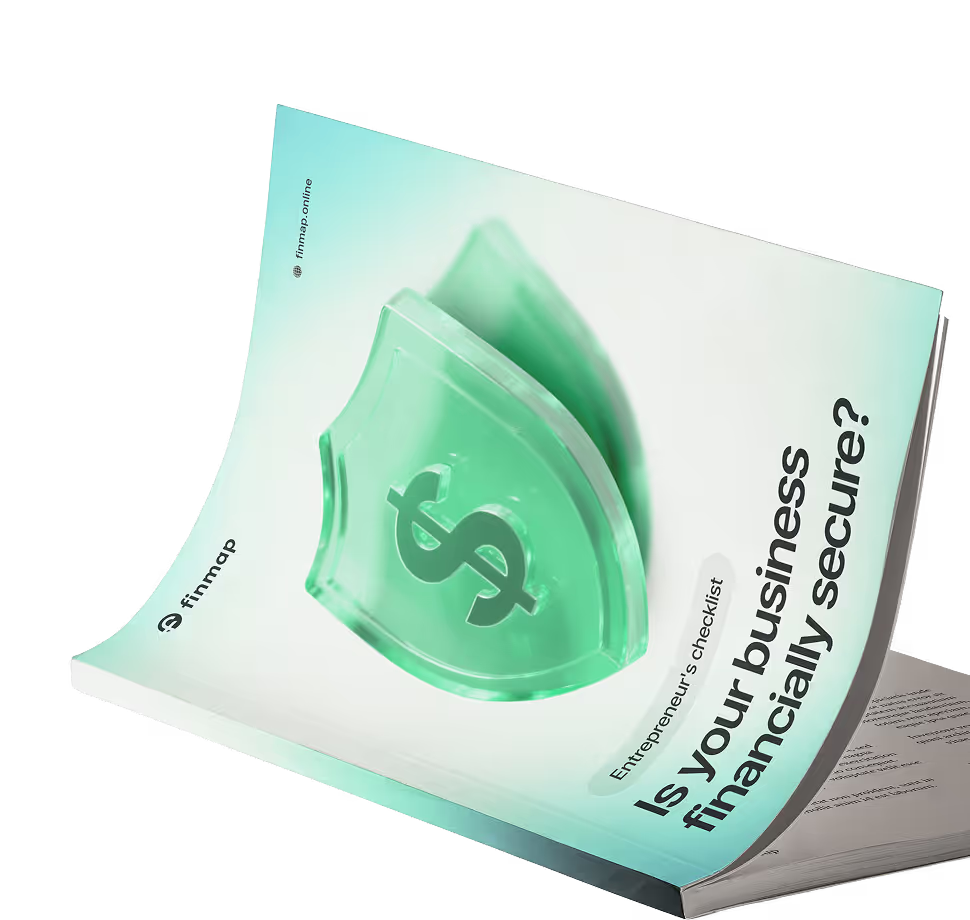
To restore control and predictability, you need to establish a clear cash flow management process.
Below are three key steps that mark the beginning of effective money control in a local business.
Control
- Create a unified base of financial data and add all your accounts — bank, cash, and card — into a single system. This allows you to see the full picture of money movement in real time.
- Record all transactions daily — income, expenses, and transfers between accounts. Regular updates help you avoid cash gaps and clearly understand how much money is actually available.
- Automate this process using bank integrations and automation rules — this will reduce manual work and increase accuracy.
In Finmap, setting up this process takes no more than 20 minutes:
- You can create an unlimited number of accounts in different currencies;
- Connect integrations with the most popular banks and payment systems;
- Set up automation rules that allow the system to handle transaction entries for you, saving 60–70% of manual processing time.
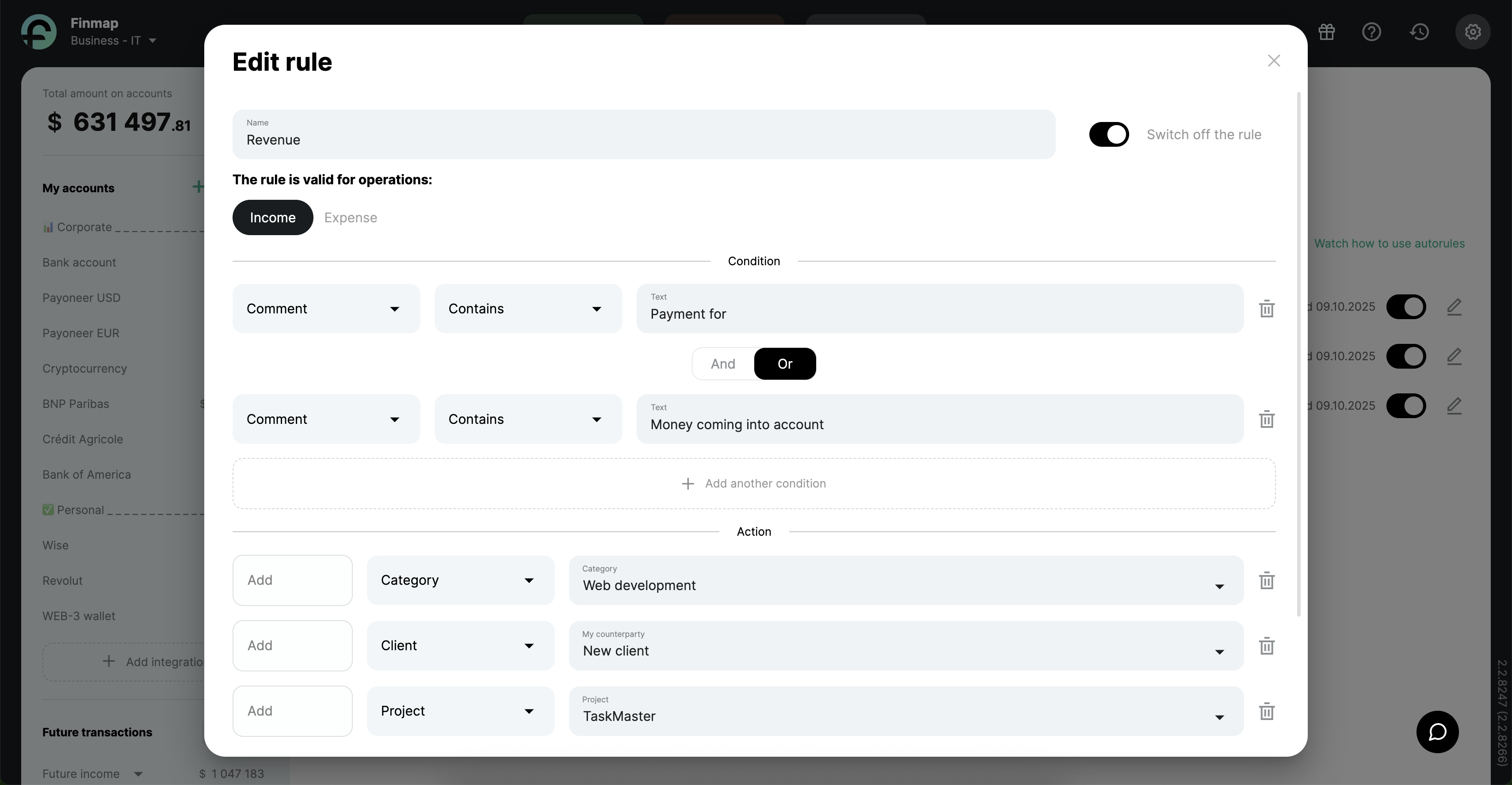
Analyze
- Analyze by categories to see which expenses are increasing and which ones generate income. This helps you quickly identify inefficient cost items and make data-driven decisions.
- Track revenue dynamics — monthly or weekly — to spot patterns and seasonality.
- Separate business and personal finances to see real operational analytics, the company’s actual profit, and avoid situations where personal expenses “eat up” business resources.
The analysis process in Finmap takes place in the Analytics section, where all the main financial reports are collected.
Here, you can not only view standard dashboards but also create custom reports based on saved filters — by categories, counterparties, projects, or periods.
In particular, the Cash Flow report allows you to track all changes in cash movement and see which income and expense sources have the greatest impact on its fluctuations.
This helps you quickly identify problem areas and make decisions based on accurate data.
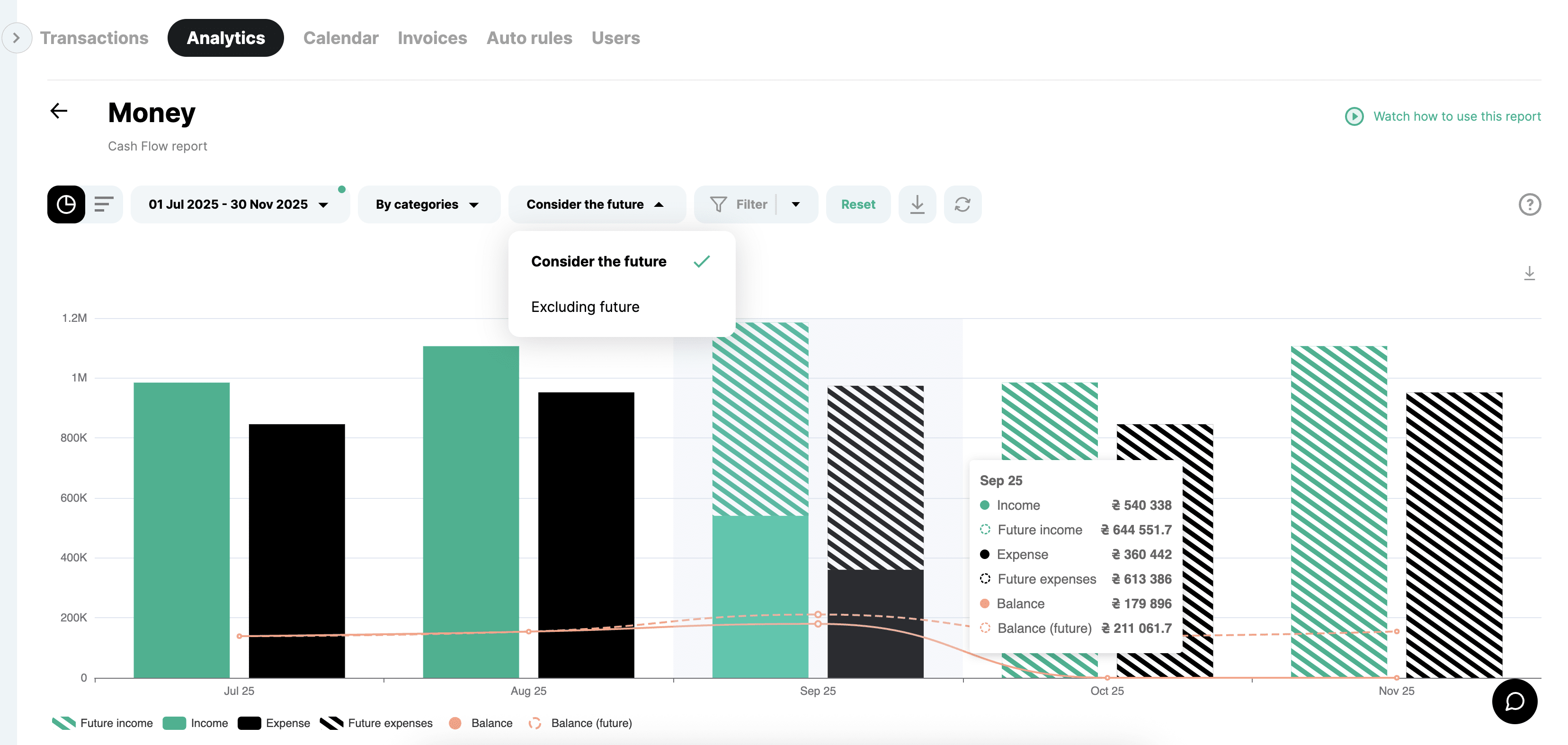
Forecast
- Use the Payment Calendar to forecast 1–3 months ahead. Add all upcoming income and expenses to see projected balances by week or month — and avoid cash gaps in advance.
- Test different scenarios — basic, conservative, and optimistic: adjust the dates and amounts of planned transactions to see how it affects liquidity, net cash flow, and available balance.
- Create an income and expense plan based on scheduled payments and regularly compare deviations to keep liquidity under control and adjust the budget promptly.
In Finmap, the payment calendar is generated automatically based on your planned transactions and shows the forecast of the company’s financial status.
It immediately indicates whether a cash gap is expected or, on the contrary, there will be a surplus of funds. The calendar allows you to assess the balance both for the entire business and for each individual account.
All changes — in dates, amounts, or transaction statuses — are instantly synchronized, so you can immediately see how adjustments will affect your future cash flow.
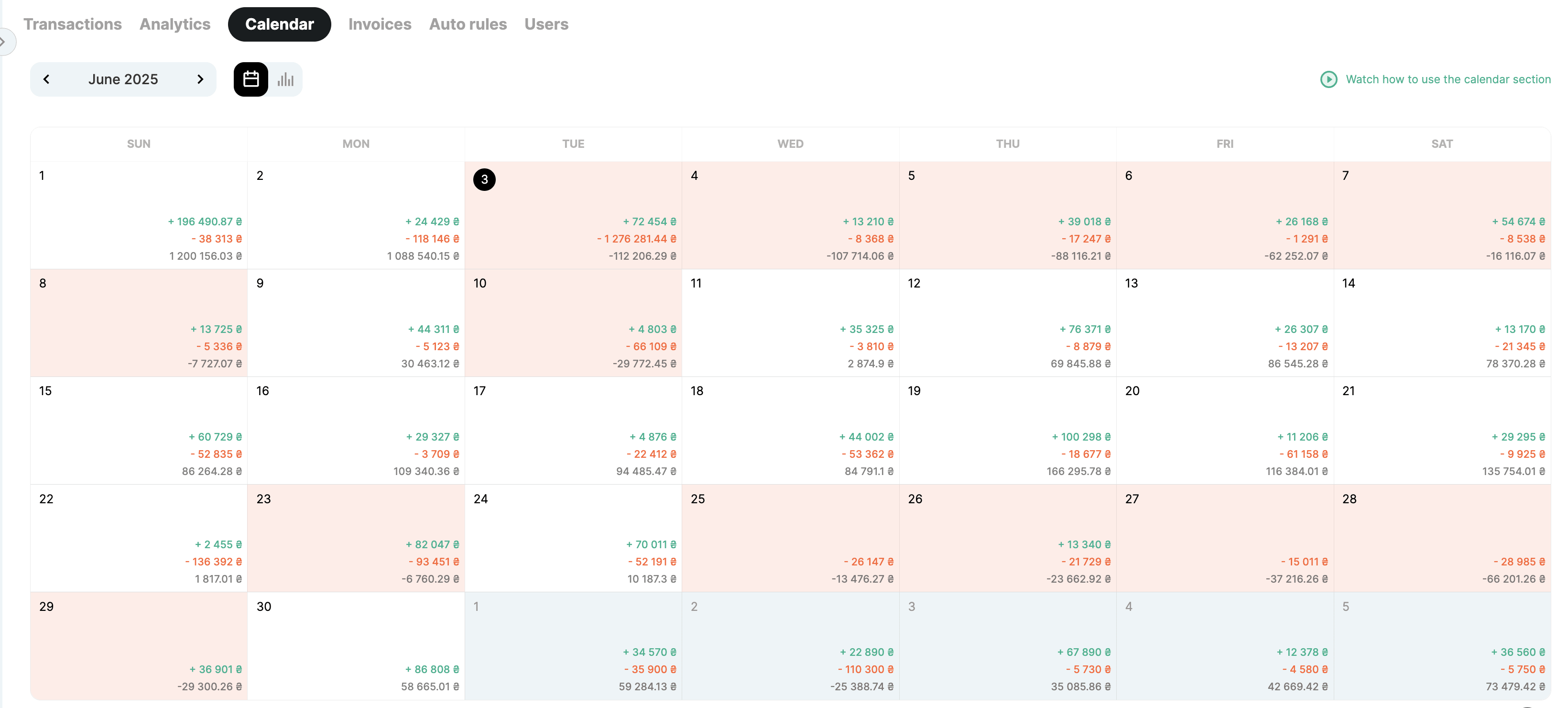
When cash flow is under control, a business gains the most valuable thing — predictability.
You no longer live from one inflow to the next, make blind decisions, or panic over sudden cash gaps.
Problem №2. Hidden Factors That Undermine Financial Stability
Sometimes financial instability arises not from declining sales or external factors, but from internal processes that quietly erode profits.
The cause isn’t always obvious: expenses grow faster than income, some money disappears into minor costs, and seasonal fluctuations only amplify the sense of instability.
To understand where exactly the business is losing profit, it’s worth paying attention to three factors that often go unnoticed but have a decisive impact on the financial outcome.
1. Seasonality: The Hidden Factor Affecting Revenue Stability
Your store, office, or café operates year-round — the assortment doesn’t change, prices stay stable, and clients remain the same. Yet one month there’s enough money, and the next you have to cover expenses from personal funds or a credit line.
The reason often lies in untracked seasonality.
It’s not always obvious: changes in season, holiday periods, days of the week, or even customer behaviour can create hidden demand cycles.
To avoid financial “swings,” seasonality needs to be identified and managed — by building reserves in profitable months and planning cash flow in advance.
In Finmap, seasonality is easy to track in the Cash Flow report — where the main dashboard clearly shows the dynamics of all financial activity and reveals seasonal trends.
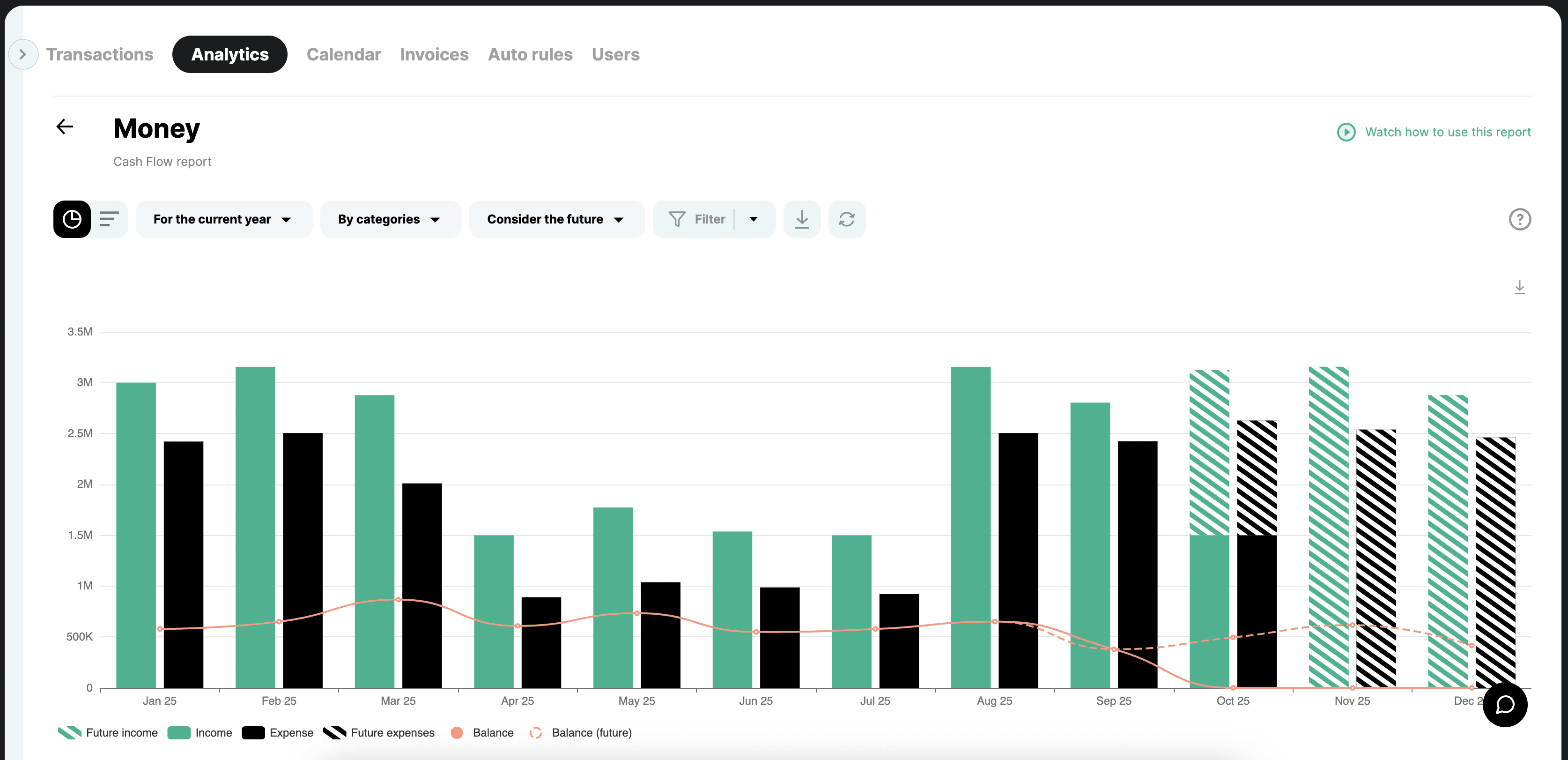
In addition to the graphical view, a tabular format is also available, where you can analyze demand changes by products, services, or specific categories in percentage terms.
If you want to dive deeper into how to analyze and manage seasonality — read the article «From Seasonal Slumps to Steady Profit: How to Earn All Year Round».
2. Hidden Expenses: Small Things That Cost the Business Its Profit
In local businesses, financial losses often hide not in large payments but in everyday small expenses that seem insignificant.
Coffee for the team, packaging, delivery, subscriptions, small purchases — none of them have a major impact individually, but together they make up a noticeable part of the budget that’s easy to overlook.
When these expenses aren’t recorded separately, the business loses the ability to control profitability and plan for growth.
To avoid this:
- Record all expenses — even the smallest ones. This gives you a real picture of where your money goes.
- Review your expense structure every month. This way, you’ll see which cost items are growing without objective reasons.
- Optimize small payments. Eliminate ineffective services, review suppliers, or consolidate purchases to reduce costs.
It’s the level of detail that opens up opportunities for optimization — allowing you to cut unnoticed expenses and free up resources for growth.

How to Track Expenses in Finmap:
- Use categories and subcategories for detailed tracking. This helps you see exactly where the money goes — from rent and advertising to office coffee.
- Record all expenses, even those that don’t go through the bank. Add cash transactions manually or via the mobile app to get the full picture.
- Set up automation rules even for small payments. Taxi rides, grocery purchases, or office supplies — everything will automatically be assigned to the right category with no extra effort.
Finmap reports show the dynamics of each expense item, helping you quickly identify which ones are increasing and which can be optimized to preserve profit and maintain liquidity.
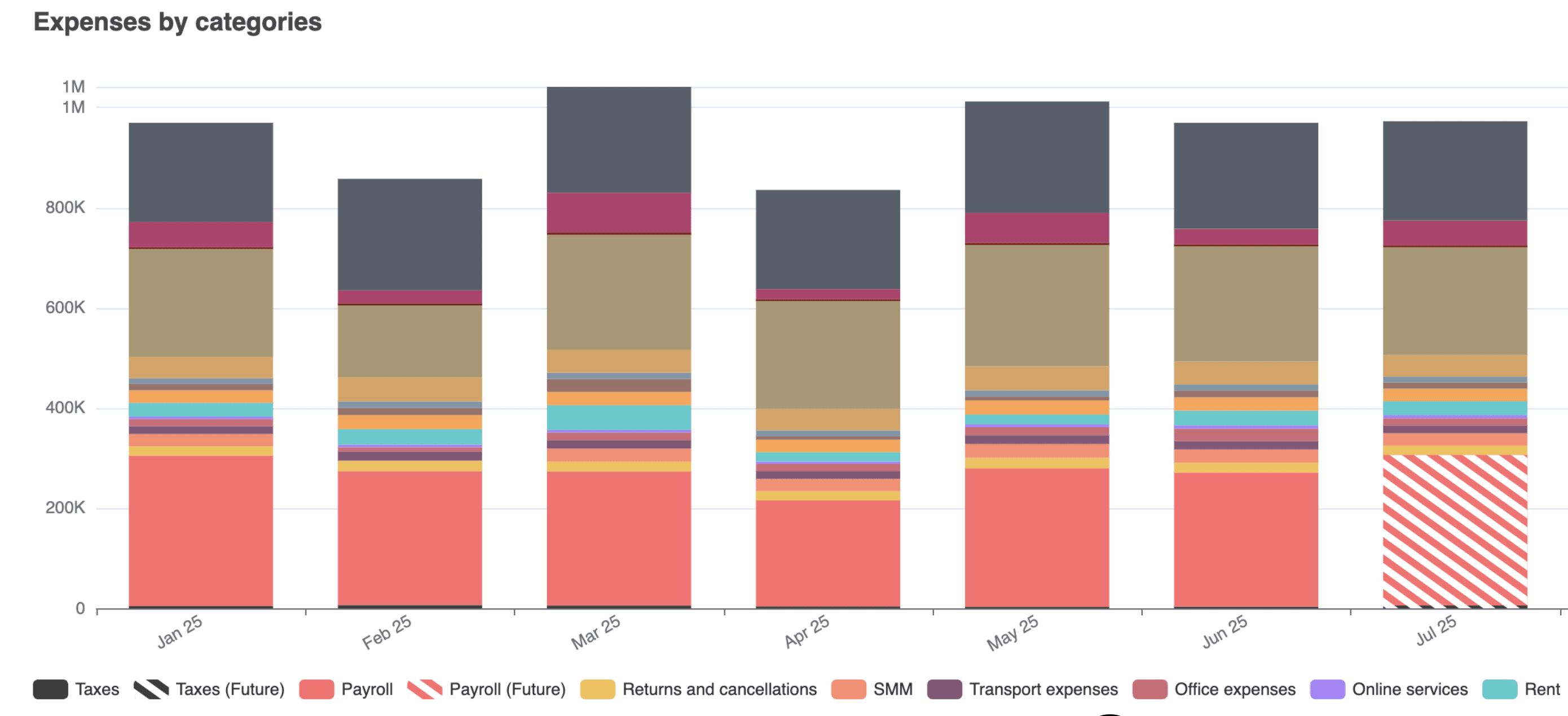
3. Inefficient Pricing: The Negative Impact on Margins
Even a steady flow of clients doesn’t guarantee profit if prices don’t cover real costs.
Many local business owners set prices intuitively — based on competitors or customer expectations. As a result, some products or services generate minimal profit or even losses, while everything appears stable from the outside.
When the costs of materials, logistics, or labor rise but prices remain unchanged, margins gradually shrink.
To avoid this, pricing should be viewed not as a marketing decision but as a financial strategy.
Regularly analyze the profitability of each product or service category, review prices after cost changes, and check whether one area of the business is subsidizing another.
In Finmap:
- Use tags to separate expenses into direct and fixed costs — this helps you see the margin of each product or service and understand which areas actually generate profit.
- Compare the percentage breakdown of expenses by category between months to track whether the cost of purchases, rent, or services is increasing.
- Use analytics comprehensively — compare profitability and sales volumes with previous periods, identify trends, and look for opportunities to optimize your cost structure and increase margins.
Financial management is not only about income — it’s primarily about controlling the factors that quietly reduce profit.
Problem №3. Scattered Finances Due to Lack of Delegation
In local businesses, financial processes are often handled by those who are directly “on the ground” — administrators, cashiers, managers, or salespeople. They’re the ones who receive client payments, make purchases, record expenses, and handle cash.
However, when financial information is collected through messengers, spreadsheets, or voice messages, the owner inevitably faces chaos in reporting.
The lack of systematic delegation leads to:
- Time loss — you have to manually verify payments, clarify details, and consolidate figures from different sources.
- Errors and duplications — transactions are recorded multiple times or get lost entirely.
- Financial losses — incorrect or delayed entries distort the profitability picture.
- Lack of up-to-date information — the owner sees the situation with a delay instead of in real time.
- Risk of misuse — without clear roles and access levels, it’s nearly impossible to maintain financial discipline.
Without a proper delegation system, finances become a constant source of stress. The owner loses agility in decision-making, and growth prospects become minimal.
The solution is to delegate financial management correctly.
Instead of collecting data manually, add employees directly to Finmap and set flexible roles and access levels. This way, team members can independently record income and expenses only for their areas of responsibility — without having access to the company’s full analytics.
This gives the business three key advantages:
- Speed: data is entered into the system instantly, without manual forwarding.
- Accuracy: all transactions are recorded in one place, without duplication or errors.
- Control: the owner sees the full financial picture in real time, while employees work only within their area of responsibility.
How to Set Up a Delegation System in Finmap
| Step | Action | Why It’s Important |
|---|---|---|
| 1. Create flexible roles | In the Users section, create separate roles for managers, administrators, cashiers, or other team members. | This allows you to grant access only to the necessary accounts, categories, or projects — without the risk of exposing all financial information. |
| 2. Review system roles | Check Finmap’s default roles — with full access, view-only, or limited permissions. | This helps you quickly determine who needs full access (e.g., a partner or financial director) and who only requires partial access. |
| 3. Test the role | Register an additional email address and add it as a user with the desired role. | This lets you see exactly what information an employee can view and adjust access before publicly launching the system. |
| 4. Add employees | Add all colleagues to Finmap using their work emails and assign them the appropriate roles. | This launches the delegation process: employees will be able to independently record income and expenses within their area of responsibility. |
| 5. Introduce the system to your team | Hold a short onboarding session or send a quick guide on how to use Finmap. Teach them to use the mobile app. | This ensures prompt data entry even without computer access — financial information will update in real time. |
Result: you no longer waste time manually compiling reports, and your team becomes transparently and responsibly involved in the financial process.
How Finmap Helped Dasha Katsurina Studio + Showroom Avoid Cash Gaps and Maintain Financial Control
Even in a small business, financial processes can be more complex than they seem.
When there are several sales directions, different product categories, and part of the team works in another country — it’s easy to lose control without a unified money management system.
That’s why the team at Dasha Katsurina Studio + Showroom decided to build their financial management in Finmap from the very beginning.
Dasha Katsurina Studio + Showroom is a space about women, style, and Ukrainian craftsmanship. Located in the very heart of Warsaw, it brings together works of Ukrainian designers and artisans — from clothing and jewelry to tableware and books.

It’s a place where you can feel young Ukrainian energy, enjoy a coffee, relax, and connect with like-minded people — a space free from prejudice, where creativity, authenticity, and humanity come first.
The team had already worked with the platform in their Ukrainian company, so it was only natural to continue using the same tool for their Warsaw branch — to maintain a unified structure for financial processes and reporting.
Before systematization, the team faced typical challenges of local businesses:
- cash gaps;
- delayed reports;
- lack of up-to-date information for decision-making.
These issues slowed down financial processes and made cash flow planning more difficult.
With Finmap, finances became transparent, structured, and accessible at any time.Thanks to the configured system of categories, accounts, and reports, the team can now see the full picture of cash flow and react quickly to changes.
Now we clearly see where the money is, how much has been spent, and on what exactly. It saves time and helps keep the business under control. — Viktoria, team member at Dasha Katsurina Studio + Showroom
Today, the financial system of Dasha Katsurina Studio operates smoothly:
- all data updates automatically;
- reports are generated instantly;
- the structure of expenses and income has become transparent.
This made it possible to avoid cash gaps, optimize financial processes, and focus on what truly matters — developing the brand and working with clients.
It’s important not to lose track of money and to see where it’s going. Without that, it’s impossible to understand how the business works. Financial management is the foundation of stability. — Viktoria, team member at Dasha Katsurina Studio + Showroom
Stability Begins with Systematic Management
In local business, every unit of money matters — that’s why it’s important not just to count money but to see the full picture.
When cash flow is under control, expenses are structured, and the team is involved in the process — finances stop being a source of stress and become a foundation for growth.
Finmap helps you build this system:
- unites all accounts in one place;
- automatically records income and expenses;
- provides real-time analytics;
- allows you to delegate financial management without losing control.
As a result, you gain not just numbers — but confidence and predictability in every decision.
Start today with Finmap so your business runs systematically tomorrow!
Frequently Asked Questions
1. Why is there not enough money even when sales are stable?
This can result from cash gaps, uncoordinated expenses, or an unbalanced cash flow structure. Often, money gets “stuck” in inventory, delayed payments, or small unnoticed expenses that accumulate over time.
2. How can I tell if my business has a cash flow problem?
The signs are simple: frequent lack of funds for daily expenses, delays in payments, the need to take loans to cover operating costs, or the absence of reserves for unexpected situations.
3. What should I do if several people manage finances and confusion arises?
You need to establish a clear delegation system: define who is responsible for what, set transparent rules for recording transactions, and centralize all data in one place to avoid duplication and errors.
4. How can I determine if my prices for goods or services are correct?
Regularly analyze your margins — the ratio of income to expenses. If costs increase (for example, due to suppliers or rent) while prices remain unchanged, margins decrease — and profitability drops even with stable sales.
5. What first steps will help bring financial order to a local business?
Start with the basics:
- unite all accounts in one system;
- record every transaction (cash, non-cash, small expenses);
- analyze the structure of income and expenses;
- create a payment calendar and a reserve fund.
This will form the foundation for financial stability and predictability.
Book a free consultation!
An outsourced CFO will help you set up effective financial management and make informed business decisions

Get Finmap for free!
Try 7 days of financial clarity
No card required
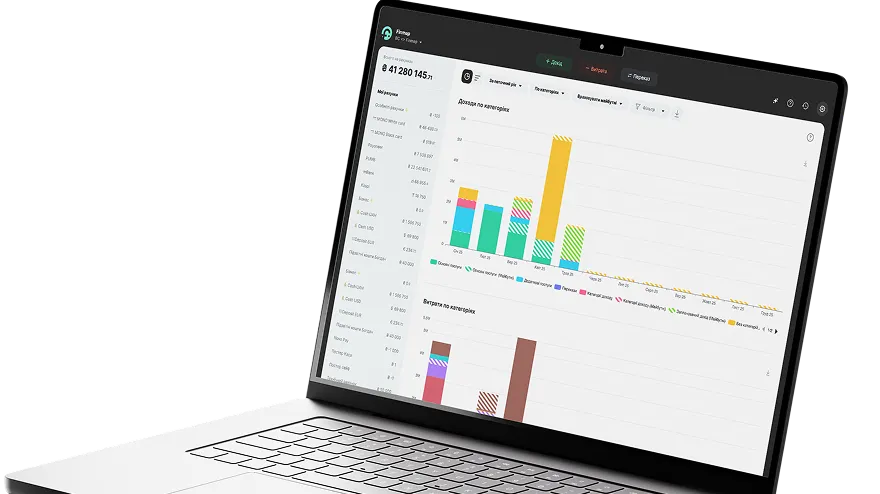
- 20+ years in finance.
- Business consultant specializing in management accounting and budgeting.
- Financial expert at Finmap since 2022.
- Financial Director (2019–2022).
- Chief Accountant (2004–2019).
Money Doesn't Disappear.
You Just Don't See It.
Get a personal financial diagnosis or a Finmap demo — and see your business from a new perspective
Recommended by the Author
Ask Your Question to a Finmap Expert
We will contact you shortly.



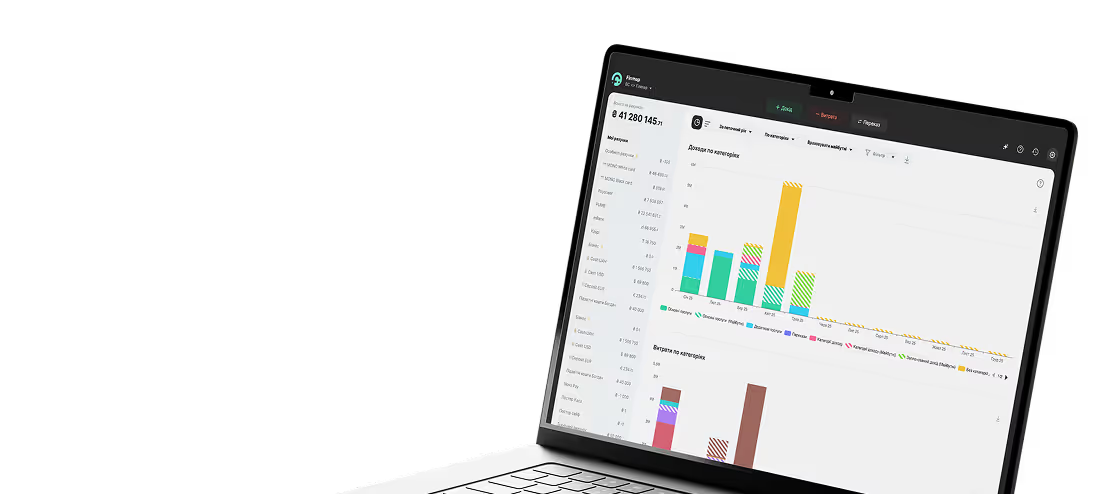

.webp)

